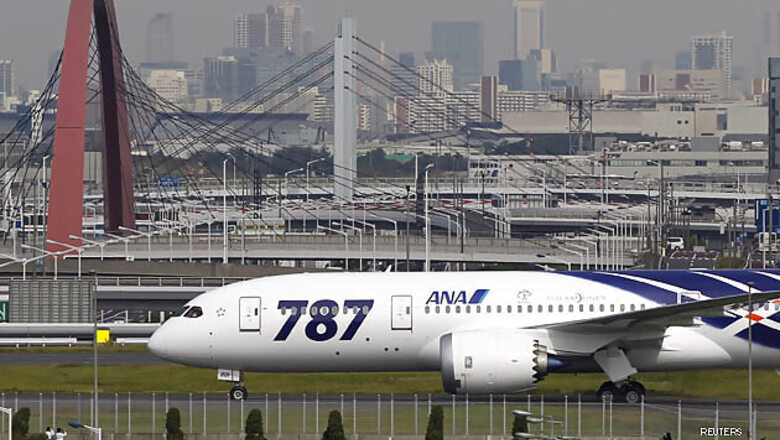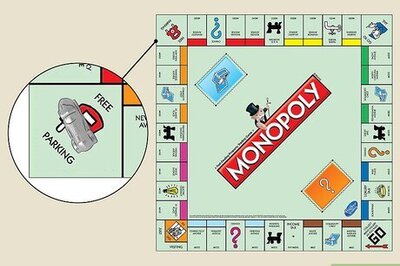
views
New York: On the same day one of its new Dreamliners made an emergency landing because of a mechanical problem, Boeing said US regulators had ordered the entire fleet of 787 jets to be inspected for a possible fuel line problem. The twin mechanical issues, while not necessarily uncommon, were yet another headache for Boeing, a company still working to overcome the negative perception of production problems that delayed delivery of the 787 by three and a half years.
Its latest problem involved a brand new United Airlines 787 Dreamliner with 184 people aboard, which was forced to make an emergency landing in New Orleans due to an undefined mechanical issue. Boeing also said on Tuesday the US Federal Aviation Administration was requiring inspections of all 787s in service to confirm that fuel line connectors had been properly installed. The checks were recommended after two non-US carriers experienced fuel leaks. Boeing declined to name the carriers.
Japan's All Nippon Airways, Boeing's Dreamliner launch customer, said on Wednesday it had reported the leak to the FAA and Boeing. ANA spokesman Yoichi Uchida said the carrier found the fuel leak on October 23. He said the airline completed inspections of all 16 ANA Dreamliners on Sunday, and that the work did not interrupt scheduling.
Local rival Japan Airlines Co said they too had inspected their six 787s and that flights were unaffected by the checks. It said it had not found any fuel leaks prior to the inspections. Air India owns three Dreamliners. The FAA requirement, due to be issued on Wednesday in an airworthiness directive, "makes mandatory inspections already recommended by Boeing," the company said in a statement. FAA officials did not immediately respond to requests for comment.
Boeing said improperly installed fuel line connectors could lead to fuel leaks, loss of engine power or fire. But at the same time, it said there were "multiple layers of systems to ensure none of those things happen". Boeing advised airlines flying the 787 to make inspections last month, and it said about half of the 33 jets in service have already been inspected.
The FAA directive was first reported by Bloomberg News. The agency issued a previous airworthiness directive for the 787 and 747 in September, after problems with General Electric GEnx engines on those models. Such directives alert aircraft operators to a known safety defect. Separately, a brand new United Airlines 787 Dreamliner with 184 people aboard was forced to divert and make an emergency landing in New Orleans on Tuesday after experiencing a mechanical problem on a flight from Houston to Newark, NJ.
The pilots of Flight 1146 declared an emergency while in the air. When the plane landed safely around 9:25 a.m. CDT, fire trucks were on the runway, a standard procedure. Initial inspections showed that there was no fire in the aft electrical equipment bay, where the problem was reported, and no sign of electrical "arcing," or electricity flowing incorrectly, according to a person familiar with the situation.
Boeing Co is ramping up production of the 787 to help reduce a backlog of 838 orders worth more than $173 billion. While concerns about its safety could affect passenger perceptions and raise issues with deliveries to other airlines, analysts said flight diversions are not unusual, especially with new aircraft.
"These are the typical growing pains one would expect with a new airplane as it enters service," said Carter Leake, a former military and commercial pilot who is now an analyst with BB&T Capital Markets. "No conclusions can be drawn." United said the problem occurred with its third 787, delivered on November 27. The airline, which is due to receive two more 787s this month put the passengers on other flights to Newark.
"At this point, we're just looking at this specific plane, not the fleet," said Christen David, a United spokeswoman. United is the first US airline to put the new carbon-composite 787 into service and flew its first commercial flight with the new jet on November 4. Shares of ANA dipped 1.1 per cent in Tokyo with JAL down 0.1 in line with the benchmark Nikkei 225 index.


















Comments
0 comment